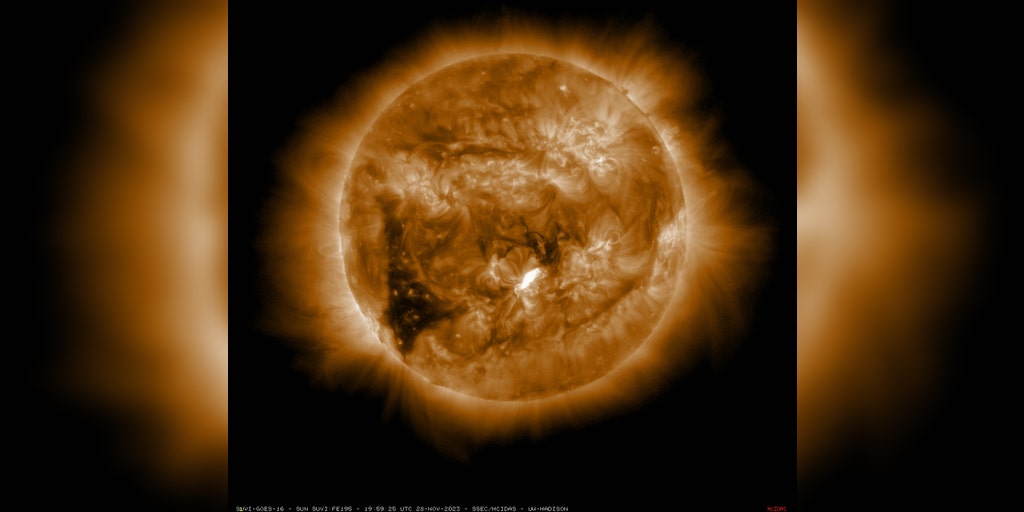What is an aurora? The phenomenon explained
Dancing across the skies in vibrant ribbons of color, auroras are one of nature’s most magnificent natural phenomena.
Space weather forecasters say a powerful M-class solar flare created a high-frequency radio blackout event on Tuesday, and multiple eruptions from the Sun have prompted geomagnetic storm watches for later this week.
MESMERIZING VIDEO: ‘WATERMELON’ AURORA DANCES OVER ALASKA
On Tuesday, NOAA Space Weather Prediction Center said an M9.8 solar flare created a moderate HF Radio Blackout Event and the associated flare was recorded by NOAA’s GOES-19 satellite. HF radio degradation was possible over the eastern portion of the South Pacific Ocean when the flare was in progress, according to NOAA.
The SWPC said because of the recent activity, it’s possible for more M-class flares and a slight chance for X-class flares, the strongest on NOAA’s scale.
Solar flares are classified by their strength with five categories designated by the letters. M and X-class flares are the strongest. An X-class flare is the largest explosion and can produce as much energy as 1 billion atomic bombs, according to NASA.
An error occurred while retrieving the Tweet. It might have been deleted.
The SWPC said more associated solar eruptions are Earth-bound.
At least three coronal mass ejections, or CMEs, happened on Sunday, sending clouds of plasma from the Sun toward Earth. CMEs can take between 1 and 3 days to reach Earth’s atmosphere. When multiple eruptions from the Sun happen, one event can overtake the other, producing back-to-back solar storms.
Forecasters expect the first impacts from solar particles to arrive as early as Wednesday evening as a “potential glancing blow” or “near-Earth” with the next round of solar wind arriving with “at least glancing blows” by Thursday.
NOAA has a 5-point rating scale for solar storms ranging from G1 to G5. Models suggest G1 (minor) levels are possible on Thursday and G2 (moderate) levels on Friday as the additional CMEs arrive.
7 THINGS TO KNOW ABOUT THE NORTHERN LIGHTS
NOAA’s space weather forecasters are continuously watching the Sun using solar observing instruments on satellite to detect and forecast space weather as it happens. After a solar eruption, computer models then help determine when the particles are expected to arrive within Earth’s atmosphere.
What are the impacts of a solar storm?
The Northern Lights dancing above the Riverton, Wyoming National Weather Service office on Sunday, Nov. 5, 2023. (Image: NWS Riverton)
For most, a geomagnetic storm won’t have any impact. A strong (G3) storm can cause intermittent disruption to satellite navigation and low-frequency radio navigation. NOAA issues space weather forecasts to help spacecraft operators and power providers prepare their systems for potential impacts.
For the public, a solar storm can actually be exciting because the charged particles crashing into Earth’s atmosphere create aurora borealis, also known as the Northern Lights. These dancing lights are most common around the poles, but with a strong solar storm can appear at lower latitudes.
NOAA’s Aurora Dashboard shows the likelihood of faint aurora lights in the Northern U.S. beginning Wednesday night.
Recent solar storms in November created vivid displays of the Northern Lights as far south as the Carolinas.
More geomagnetic storms and associated aurora activity are happening because Sun’s activity is increasing as it approaches the Solar Maximum during an 11-year solar cycle. The latest SWPC forecast for Solar Cycle 25 moves up the solar maximum to January- October 2024.


